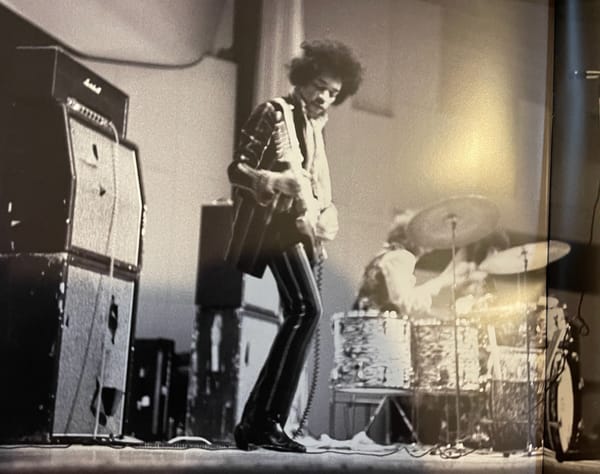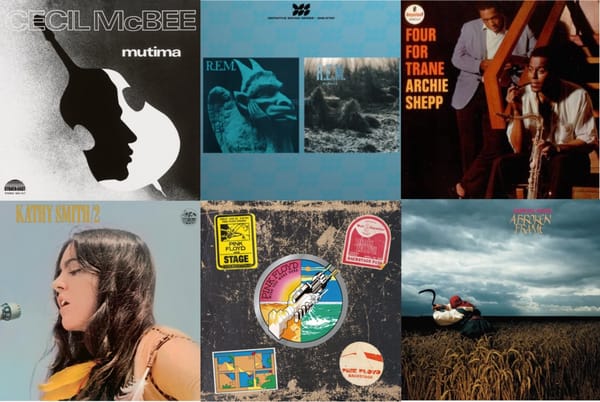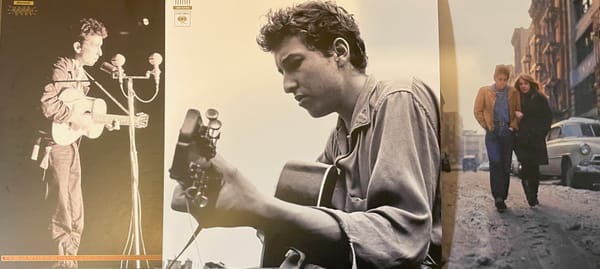Reviews: My Morning Jacket and Ornette Coleman
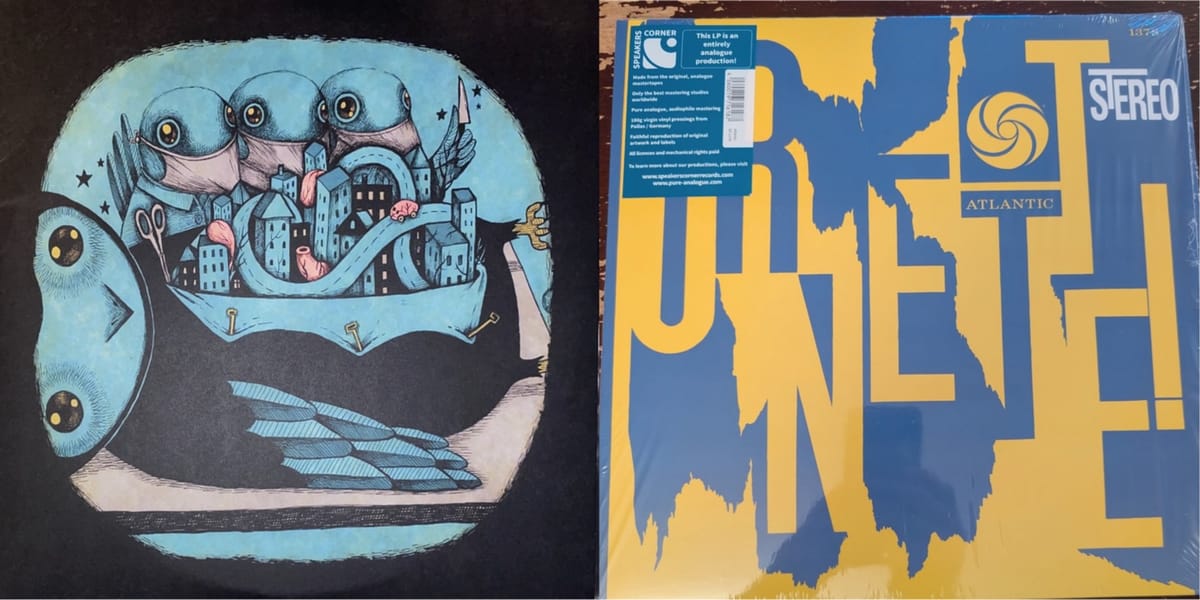
A deluxe edition of MMJ’s Z and an audiophile pressing of Ornette! make their way to vinyl.
Today at The Vinyl Cut, we've got My Morning Jacket and Ornette Coleman. Not together on the same album, of course. Can you imagine? That would be nuts. No, today we're looking at the 3-LP deluxe reissue of My Morning Jacket's Z, which hits record stores this Friday, October 3, and we also took a listen to the new all-analog reissue of Ornette Coleman's free-jazz masterwork Ornette!, from the lauded German reissue label Speakers Corner.
• Review: My Morning Jacket: Z, 20th anniversary deluxe edition
• Review: Ornette Coleman: Ornette!
Once again, a huge thank-you to our subscribers. If you've been checking us out and like what you've read but still haven't signed up yet, please consider popping your little old email address into the sign-up field below. We're a reader-supported newsletter, and your subscription helps support what we do. Thanks!
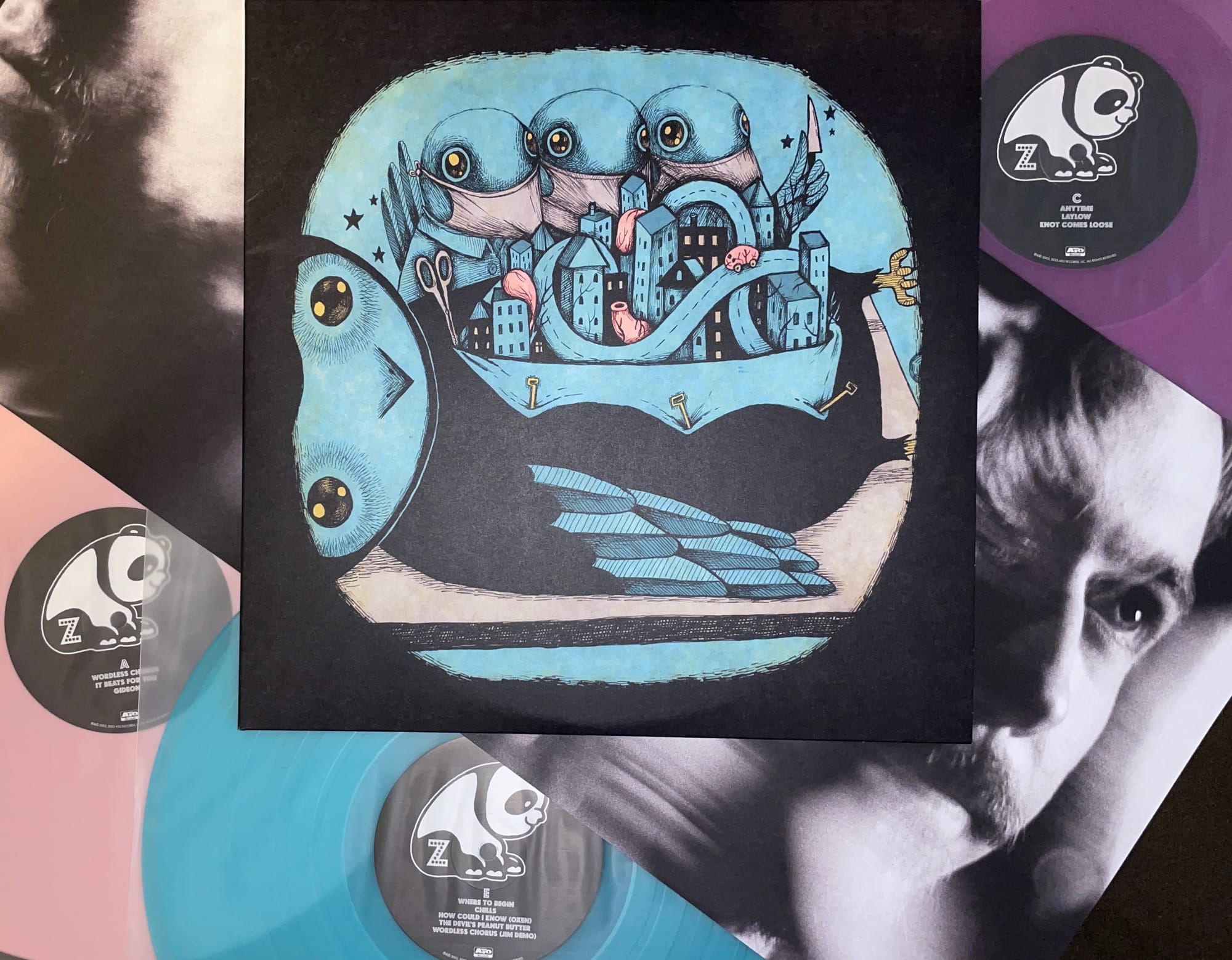
My Morning Jacket: Z - 20th Anniversary Deluxe Edition (ATO Records)
Review by Ned Lannamann
What a difference two decades make. When My Morning Jacket released their fourth album, Z, in October 2005, it was greeted with enthusiasm for its, well, zigzagging qualities. Instantly, the Kentucky band was moved out of the “classic-rock revivalists” designation and placed into the prestigious “American Radiohead” slot. Presumably this was their Kid A, so deemed because of a few stylistic detours and some well-placed synthesizers.
“Wordless Chorus” was probably the biggest shock, kicking off the album with a squelchy synth and subtle white noise. "Off the Record" shape-shifts from big bright guitars into a hushed dub coda, and “Into the Woods” felt designed to be deliberately destabilizing, a lurching carnival waltz that didn’t follow any mainstream musical roadmap. Meanwhile, “Dondante” intriguingly flirted with minimalism before reaching a high-volume conclusion.
From the vantage point of 2025, however, it’s a bit surprising how conventional Z sounds. It’s a fine time, to be sure: Songs like “Anytime,” “Laylow,” and “What a Wonderful Man” have not dimmed with age and still rock righteously.
But what Z really signposts—rather than any sort of musical upheaval or reinvention—is My Morning Jacket’s mastery of dynamics and the sharpened melodic focus of singer/guitarist Jim James’s songwriting. (His lyrics, when they’re not outright come-ons, are still pretty tough to make heads or tails of. Drugs? Are they about drugs? They sound like they’re about drugs.) It’s the maturation statement of a band that would go on to become titans of the touring circuit while releasing albums that would appease their fanbase but otherwise not perform much outreach to the unconverted.
So what Z represents is a simultaneous artistic peak and inflection point, although the second of those might have been oversold in 2005. Even the scaling back of the vast seas of echo from previous MMJ albums—touted at the time—seems a little funny now. There is still a ton of reverb on this record. Everything sounds good, but had this been recorded today, I suspect the band would have opted for even more dryness and directness. The “American Radiohead” designation doesn’t really pay out in retrospect. James & Co. would stretch a few more boundaries on 2008’s Evil Urges but spent subsequent years comfortably residing in the healthy overlap between the jam band scene and that particular type of guitar-rock band that makes collectible tour posters and wears wide-brimmed hats.
ATO Records, My Morning Jacket’s home since 2003’s It Still Moves, are commemorating the 20th anniversary of Z with an expanded edition, either on three LPs or two CDs. The vinyl package is pressed on colored wax: disc 1 is pastel pink, disc 2 is translucent violet, and disc 3 is a translucent aquamarine variety of blue. (The promo materials tout a “coral” disc, but it looks like the pressing plant had other ideas.) Emily Lazar of New York’s The Lodge is credited with mastering, which was likely all done in the digital realm. Judging from the information in the deadwax, the vinyl was cut (from a digital file), plated, and pressed entirely at GZ Media’s facilities in the Czech Republic.
The three discs contain, in addition to all of Z, 14 additional tracks. These are all hyped in the band’s webstore as being previously unreleased, but that isn't the case. (ATO’s news announcement provides a bit more accuracy.) The lovely, keening “Where to Begin” appeared on the Elizabethtown soundtrack, while “Chills” and “How Could I Know (Oxen)” were released as B-sides and have also been appended to various editions of Z at one time or another. Meanwhile, “The Devil’s Peanut Butter” briefly appeared on an obscure promo comp called Chrysalis Music 2007 Sundance Sampler, but the band apparently never wanted it heard, even going so far as to remove it from MP3 blogs (remember those?). All has since been forgiven, and the track is revealed to be an uptempo number with a catchy verse, a zippy pedal steel, and some dramatic strings during the chorus. It’s a solid enough tune that one wonders why the band wanted to squelch it at the time.
The rest of the bonus material consists of two alternate band versions of album tracks and eight solo demos by Jim James. Those demos are surprisingly similar to the finished product, indicating that James was very much the man with the plan with Z, knowing more or less exactly how he wanted each song to sound, right down to the synth pad on “Wordless Chorus” and the firestorm of guitars on “Laylow.” The notable exception is a lovely, worthwhile version of “It Beats for You” stripped down to solo acoustic guitar. The other demo standouts are, perhaps unsurprisingly, for “Knot Comes Loose” and “Where to Begin,” in which James provides starker, more emotional run-throughs of those already unadorned ballads.
The two alternate band tracks are an early version of the dub breakdown at the end of “Off the Record,” which sounds like James, bassist Tom Blankenship, and drummer Patrick Hallahan (tapping on a drum machine) improvising in real time, and a radically different version of “Into the Woods.” Gone is the album take’s drunken carousel sound, replaced by a fairly straightforward and satisfying rock rendition.
While the bonus material has enough highlights to justify its existence, the vinyl sequencing is calamitous. The CD edition actually gets it right: the four B-sides come first, then the demos and alternate takes roughly recreate the album running order, give or take a track or two. For some reason this was changed on vinyl, so that the album track and the demo of “Dondante” are sequenced back to back, and the demo of B-side “Where to Begin” comes directly before you hear the full-band version. It’s a genuinely egregious misstep that you’ll have to remedy yourself; what you can do is take the needle off the record after “Dondante” ends on Side 4, then skip ahead to Sides 5 and 6, play those in sequence, and then return and play the rest of Side 4.
In fact, the method in which they chopped up Z and the bonus material over six sides is pretty puzzling, seeing as how the sides are of radically unequal length. Side 1 is roughly 11.5 minutes, while Side 6 clocks in at twice that. They may have been trying to replicate the breakdown of the original four-sided vinyl, but with all the bonus stuff appended, it becomes haphazard and unbalanced, resulting in a choppy listening experience. What they perhaps should have done is contained the 47 minutes of Z to three album sides, made the fourth side a four-song EP containing the B-sides, and then have Sides 5 and 6 function as a stand-alone disc with all the alternates and demos.
Side-flipping aside, Z itself sounds quite good in this vinyl rendition. I have not heard the Kevin Gray-cut version that was released on Badman Recording in 2005, which seems to be the standard-bearer for Z’s sound quality on vinyl. But everything on this 2025 GZ cut sounds clear and precise, with the airy highs of James’s falsetto never turning smeary or sharp and the long trails of reverb never blotting out the soundstage. There’s some subsonic bass on “Wordless Chorus” that comes through cleanly, and the uptempo rockers like “What a Wonderful Man” sound fresh and live-sounding. Certainly, the album never acquires any of that magic “air” that audiophiles talk about, but there’s plenty of definition, even during the album’s busier sequences. The demos, naturally, don’t fare quite as well, as they are lower-fidelity recordings, but on the whole, the varied source material is well-unified throughout all six sides.
The discs come in a matte trifold sleeve with a slightly reconfigured front cover image. Some—but not all—of the album’s original artwork forms a large collage in the inner gatefold, and there’s a four-page insert with a band photo and all the lyrics. It’s much better than bare bones, but it does fall shy of a comprehensive, deluxe presentation, as there is missing art, no new liners, no individual track details, nor any kind of making-of info. And the triple gatefold format has always been a minor annoyance, going as far back as Tommy. You just know those spines are gonna tear eventually. The pressing quality varies from disc to disc (all of which are provided in black paper sleeves, not polylined). My disc 1 was close to flawless, but discs 2 and 3 had bits of noise that did not go away after ultrasonic cleaning; this probably has something to do with the different colors of vinyl used.
So this 20th anniversary package of Z nets out somewhere in the middle. The four B-sides are all good to great, and about half of the demos and alternate takes are worth hearing more than once. The vinyl presentation is decent if not definitive, and the packaging offers a few disruptions but doesn’t omit anything really important. What it doesn’t do is reframe Z in a meaningful way for future audiences or provide new context for how it sat alongside popular music at the time. Not every reissue needs to do that. Sometimes it can just be a nice trip down memory lane. And listening to Z now, the album’s consistency comes through—it makes sense that most of these tracks still dominate MMJ’s setlists to this day. Perhaps that is the way of it. All of those artistic breakthroughs, left turns, and squelchy synths become contoured and smoothed by the passage of time, until Z is revealed to be the thing that it was always meant to be: a pretty good rock record.
ATO 3-LP 33 RPM (unknown source, mastering by Emily Lazar, lacquer cut anonymously at GZ Media) • pink, violet, and blue vinyl
Listening equipment
Table: Technics SL-1200MK2
Cart: Audio-Technica VM540ML
Amp: Luxman L-509X
Speakers: ADS L980
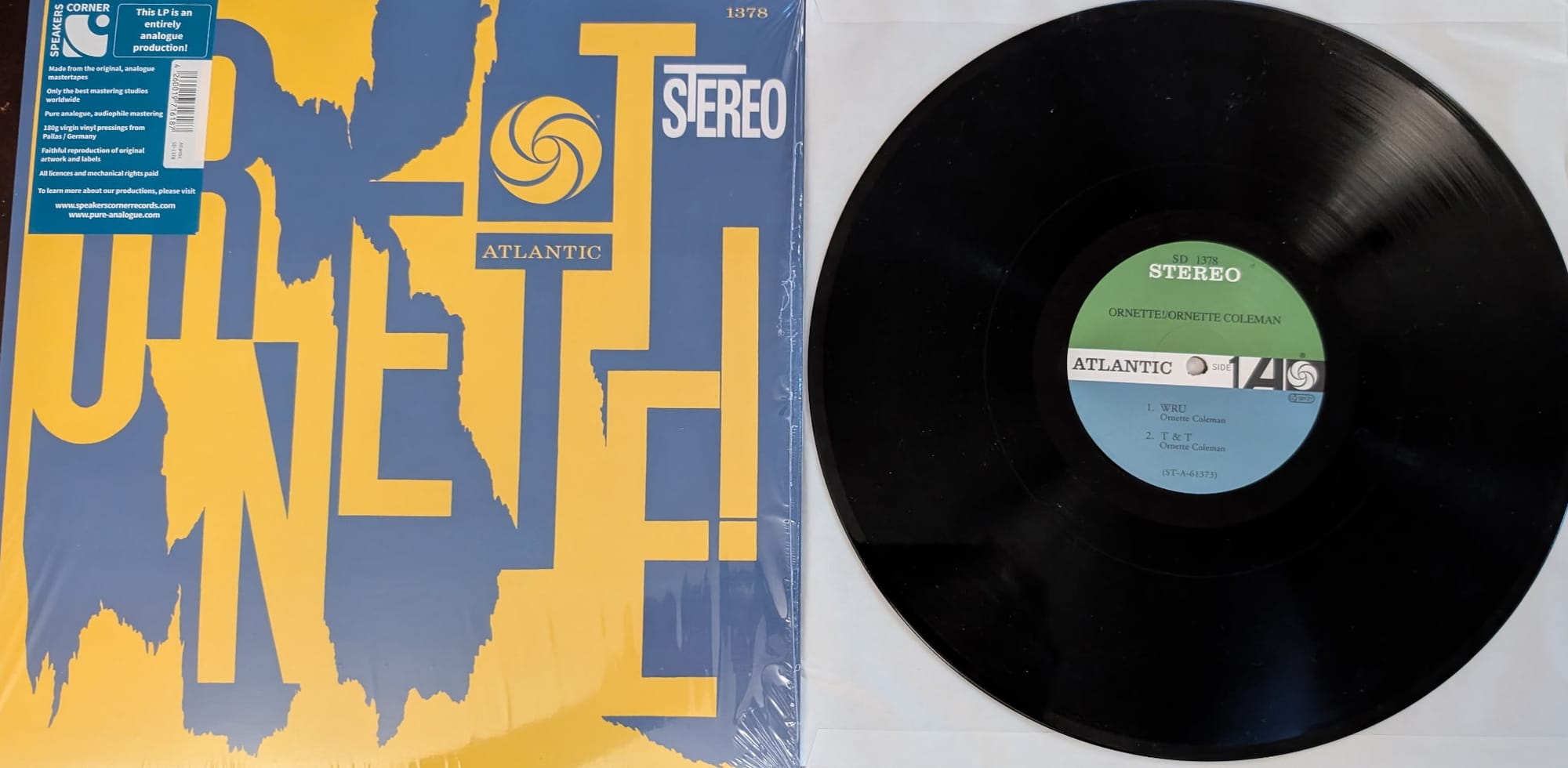
Ornette Coleman: Ornette! (Speakers Corner/Atlantic)
Review by Robert Ham
Perhaps it’s because I wrapped up my Paste vinyl column "Record Time" around two years ago, or it’s due to the sheer number of records—new releases, older titles, and reissues—that I listen to week in, week out, but I feel as though it has been a long time since I’ve truly been startled by an album. When the first bursts of melody shot through my speakers on Speakers Corner's new pressing of Ornette!, the 1962 album by jazz saxophonist Ornette Coleman, I was shocked out of my torpor and kept in rapt attention for the full 43:19 runtime of the LP.
Certainly that has much to do with the music captured here. Recorded in a single session at Atlantic Studios in New York City in 1961, the four tracks on Ornette! continue the work that Coleman and his quartet had set forth on This Is Our Music and Free Jazz, both released in ’61, of exploding the bop template from within. On those records, instrumental solos dipped and dived around the rhythm while introducing dissonant chords, and daring injections of silence only made the next barrage of notes hit that much harder.
For this session, Coleman welcomed bassist Scott LaFaro into the fold, replacing Charlie Haden. That personnel change made all the difference as LaFaro’s more forceful playing proved a perfect fit for the ensemble, keeping pace with drummer Ed Blackwell’s wandering beats and urging Coleman and trumpeter Don Cherry to go even further out. LaFaro’s solo on “W.R.U.,” the track that kicks off Ornette!, is a revelation of fleet plucking that threatens to collapse into a tangle but is held in check with a strength that belies his impressively young age (24 at the time this was recorded).
But a good amount of credit for the way this album shook me to my core is due to the impressive work that Speakers Corner has done on this reissue. This German label has quickly become the gold standard for vinyl repressings thanks to an all-analog process that runs from the original master tapes right to the cutting lathe, and their use of some of the finest audio engineers around. For this particular release, they called on the always reliable Kevin Gray to handle the mastering and cut the lacquer at his facility Cohearant Audio.
The results are, yes, astonishing. I’ve listened to this album across various media for decades now, but it never sounded quite this clear and vivid. And because of the hard panning of the instruments—trumpet and bass in the left channel; saxophone and drums in the right—a little disorienting as well. The players pull playfully at a listener’s attention, pitching it to and fro like a ship in choppy waters. It somehow forces you into their collective wavelength, which is, again, provided the full breadth of the soundstage via Gray’s careful mastering work.
The clarity of the mastering did also make the brief instances of non-fill that mar the closing track “R.P.D.D.” sound that much more present. To be fair to Pallas, the German plant that pressed the wax, it took me a few spins of the LP to catch the glitches; now that I’ve heard them, though, I can’t ignore them. It’s not enough to keep Ornette! off my turntable, but it does make me a little wary about dropping more cash on Speakers Corner’s impressive catalog of titles.
Speakers Corner 1-LP 33 RPM (analog source, original master tape to lathe, mastering and lacquer cut by Kevin Gray) • black vinyl
Listening equipment
Table: Cambridge Audio Alva ST
Cart: Audio-Technica VAT-VM95E
Amp: Sansui 9090
Speakers: Electro Voice TS8-2

